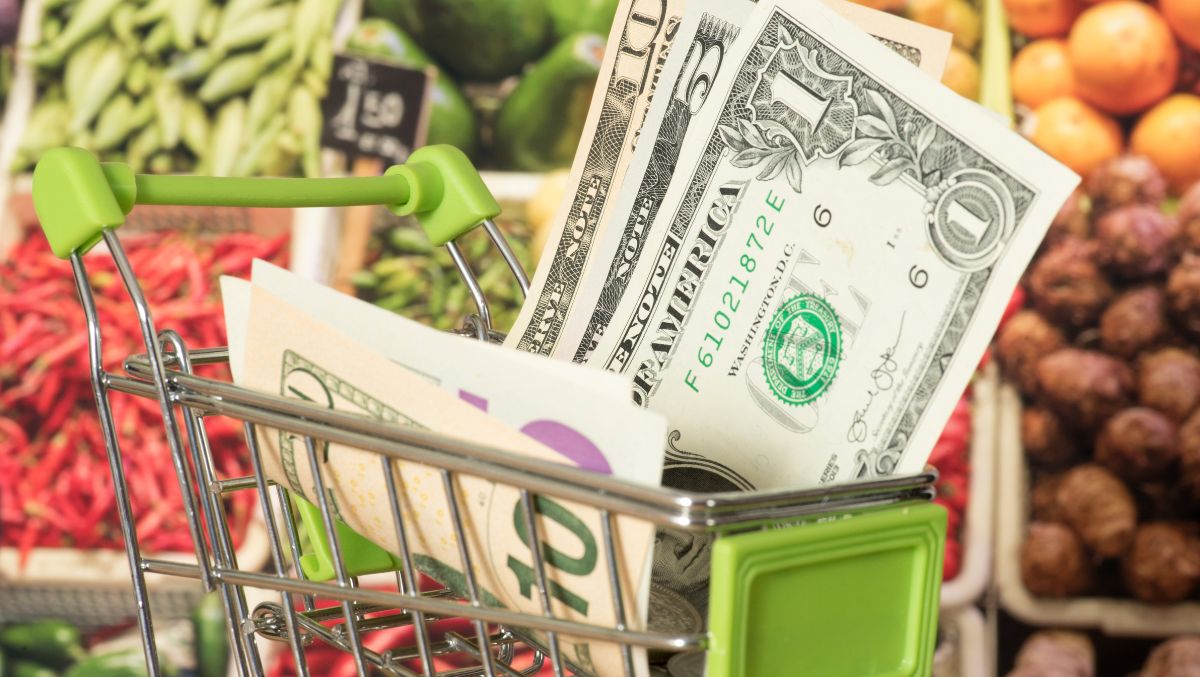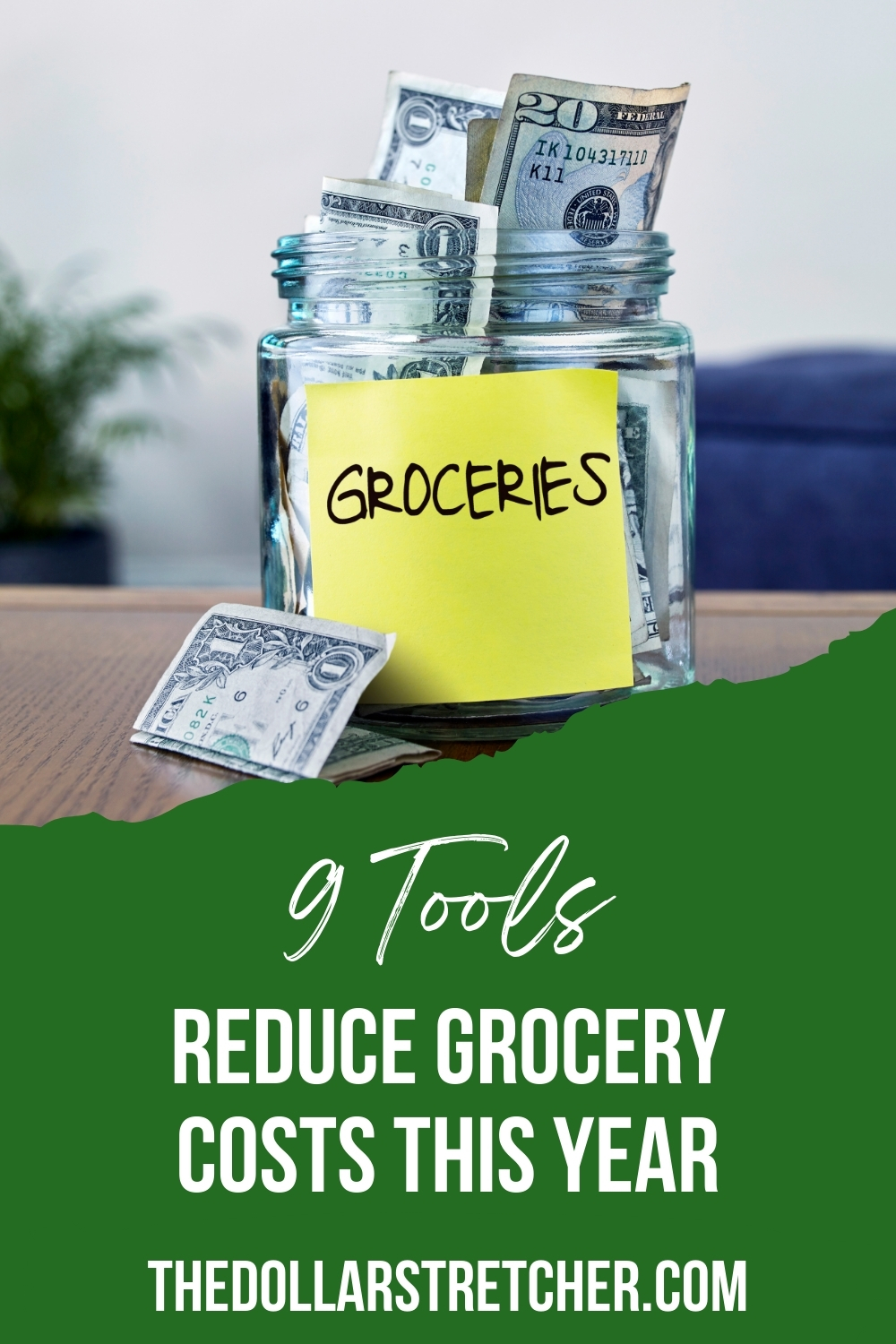Reduce Grocery Costs This Year: 9 Underutilized Tools To Try
In this article: Nine common but underutilized tools that can help you save more money on groceries this year
by Andrea Norris-McKnight

Adding a few of these underutilized grocery tools to your money-saving toolbox may help reduce food costs further this year than last, but you’ll have to give them a try to find out.
9 Underutilized Tools for Reducing Food Costs
Tools To Reduce Grocery Costs
Not all of these will work for everyone, depending on where you live and your time constraints, but some of them should work for almost everyone.
1. Find a new grocery app.
If you don’t have Ibotta, Checkout 51 or other grocery apps downloaded to your phone, you could be missing out on a simple source of savings on things you’re buying anyway.
Consider these sites and apps that can reduce grocery bills and give one or two a try. Most apps are free to try, and you can always delete those that aren’t worth your time.
Most major grocery stores also have dedicated apps that may reward users with special coupons or savings. These apps can also make it easier to find the best deals each week when meal planning (one of the tools below).
Sign Up for Savings
Subscribe to get money-saving content by email that can help you stretch your dollars further.
Twice each week, you'll receive articles and tips that can help you free up and keep more of your hard-earned money, even on the tightest of budgets.
We respect your privacy. Unsubscribe at any time.
2. Become a digital coupon clipper.
Clipping paper coupons can be time-consuming, but it only takes a few minutes to look through and “clip” digital coupons.
Many grocery stores now accept digital coupons linked to a loyalty card or through their app. If you don’t use them, you could overspend by a few or several dollars each shopping trip. Over a year, coupon savings could amount to a few hundred dollars or more.
3. Start a grocery price book.
A grocery price book is an old-school tool that requires you to track the prices of products you regularly buy so you know the best time to buy (at the lowest price). If it sounds time-consuming, it can be, especially the initial setup. But it doesn’t take as much time to maintain, and the time spent can be well worth the money saved.
A grocery price book may be the most underutilized tool on this list, partially because there is not yet a widely available app that can automate the tracking of grocery prices across multiple stores. Find out more here about how an old-school grocery price book can save you hundreds. Or try this simple digital grocery price book solution.
4. Master meal planning.
Another tool some people avoid because of the time involved is meal planning — determining what you will eat for a specified period.
If you’ve ever dieted, you may have used a meal plan to ensure you didn’t eat more calories, carbs or fats than the diet allowed. To save money, you meal plan around a weekly budgeted dollar amount.
Like creating a price book, meal planning can initially take some time. But it takes far less time over time once it becomes a habit. The easiest way to meal plan around saving money is to plan meals around items you already have in your pantry, fridge and freezer and sale items at the grocery store.
If you’re new to planning weekly menus, these tips from other Dollar Stretchers can help you master meal planning.
5. Create a collection of cheap(er) recipes.
Does the term “cheap” recipes make you think “unhealthy” or “bland” recipes? It isn’t hard to find recipes that are good for your body and your budget or tasty enough to become family favorites. It just may take some time searching the internet to find them.
Keep in mind that “cheap” is a relative term. One person’s “cheap” may be way too cheap for you, or another person’s “cheap” may be out of your budget. The real goal is to spend less than you are now and still feed your family the foods they need and want.
Tip: The savviest of Dollar Stretchers creates a collection of recipes around the cheaper items in their price book and then uses those recipes to make meal planning easier!
6. Keep a food inventory.
A food inventory is nothing more than a list of the foods in your pantry, fridge and freezer. It can be a simple inventory that tracks only basics or a detailed list that also includes every spice in your cupboard and the containers of leftovers in your fridge.
An inventory is another tool that can make meal planning easier. It lets you quickly determine what you already have on hand without searching through cabinets and the freezer. A detailed inventory with “Use By” dates can help minimize or eliminate food waste.
You can find out more about how keeping track of pantry inventory can reduce food costs here.
7. Consider investing in a second freezer.
This tip is not for everyone, but it can be a substantial source of savings if it works for you.
The more freezer space you have, the more you can stock up on meats and other freezer-safe foods when they are at their cheapest. Imagine never paying full price for meats or freezer meals ever again.
You do need to carefully weigh the pros and cons of stocking a second freezer before deciding it will save you money:
- Will you take the time to store freezer items properly to prevent freezer burn and keep an accurate inventory of what you have on hand so things don’t get forgotten and ruined?
- Do you live in an area prone to power outages? Consider how much you could potentially lose if you’re without power for a few days.
- Will you keep enough food on hand to fill a second freezer and make the added energy cost to power it worth it?
If you think a second freezer might be a good money-saving option, these tips can help you choose the right size for your needs.
8. Get a warehouse club membership.
A warehouse club membership is another tool that won’t save every family money but can save others considerably if used wisely. You can find out more here about the potential savings of buying in bulk.
Many warehouse clubs allow you to check out the store before committing to a paid membership. If you have a price book, you can peruse the warehouse club’s shelves to see how prices compare and how many items you would regularly buy. Then, determine if the savings will offset the annual membership fee.
Also, ensure you have enough room to store bulk purchases in your home.
9. Invest in well-made food storage containers.
How much food ends up in the trash in your household? Food waste is typically the result of:
- Overbuying
- Having no plan for eating the food
- Improper food storage
Meal planning can help eliminate a lot of food waste. You can stop the rest by learning to store food properly and using the proper containers and supplies for the job. Yes, it will require an initial investment, but it should pay off over time as you throw less food in the trash each month.
Which Tools Will You Try To Reduce Food Costs?
Take some time to review any of these tools you aren’t yet using. Then, start with those that don’t require a financial commitment to try, such as downloading a new app, creating a price book or finding some new cheap recipes.
If those tools help you save, you can use that extra money to invest in a good set of food storage containers. Then, invest in a second freezer and/or a warehouse club membership if it makes good financial sense.
Reviewed December 2023
About the Author
Andrea Norris-McKnight took over as the editor of The Dollar Stretcher and After 50 Finances after working under the site founder and previous editor for almost 15 years. She has also written for Money.com, GOBankingRates.com, HavenLife.com and The Sacramento Bee.
Popular Articles
- 7 Habits of Highly Frugal People
- 5 Simple Budget Cuts That Can Save $200 a Month
- How to Track Down Unclaimed Funds Owed You
- 32 Ways to Save Money on Your Utility Bills
- Do You Need Credit Life Insurance When Buying a New Car?
- How to Maximize Profits When Selling Online
- Staying Motivated to Continue Digging Yourself Out of Debt

On After50Finances.com
- 9 Things You Need to Do Before You Retire
- You Didn’t Save Enough for Retirement and You’re 55+
- When Empty Nesters Reorganize and Declutter Their Home
- Reinventing Your Career in Your 50s or 60s
- What Mature Homeowners Should Know about Reverse Mortgages
- 2 Reasons to Collect Social Security Benefits As Soon As Possible


